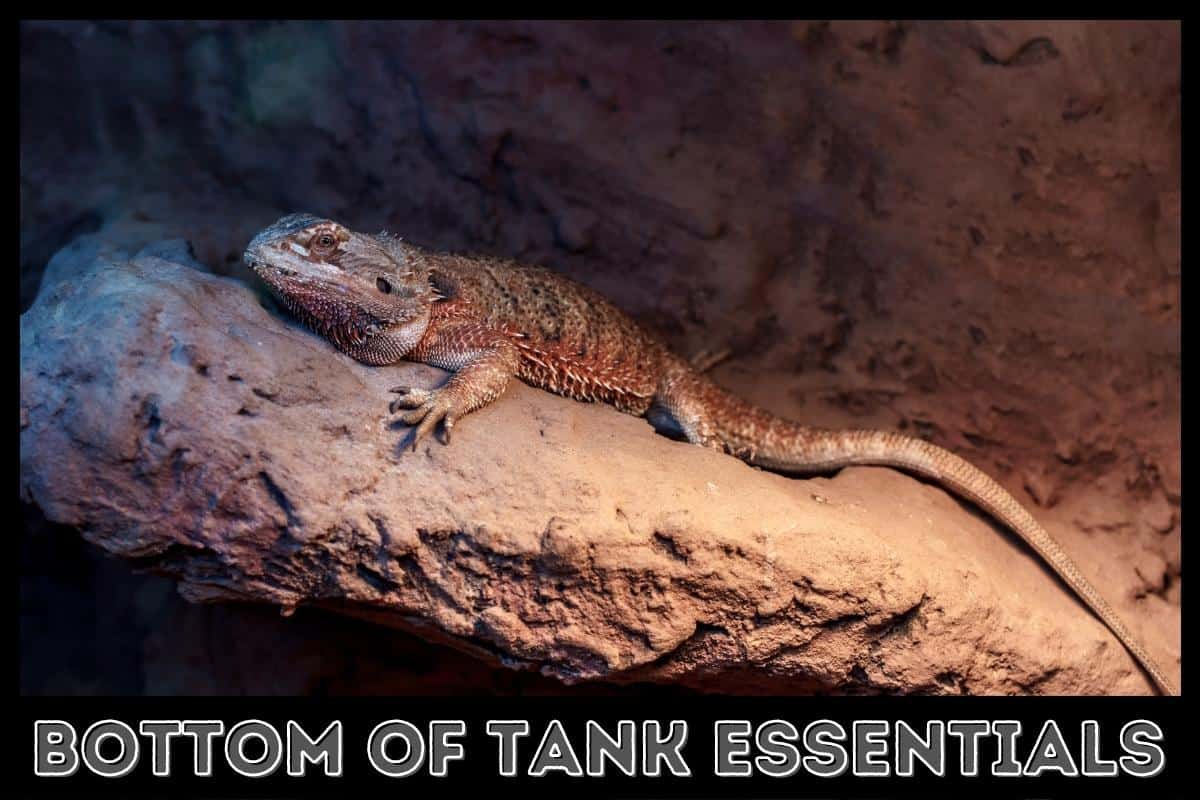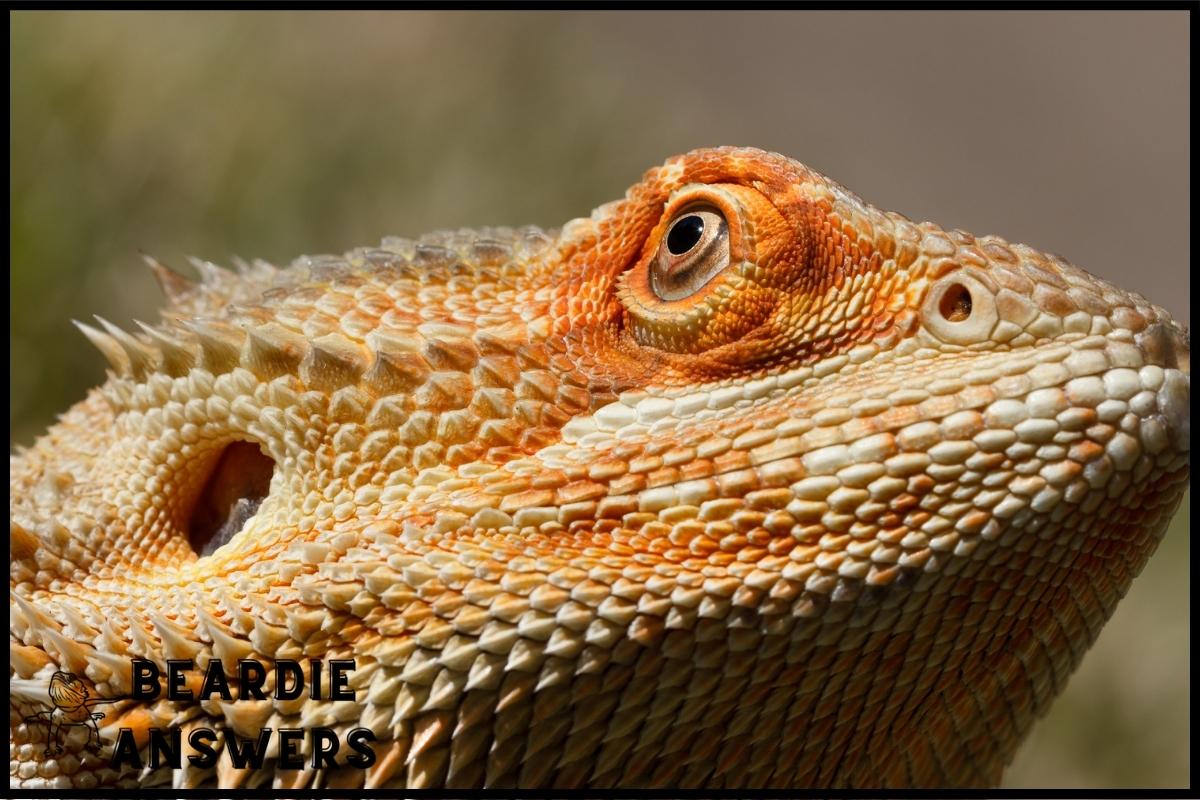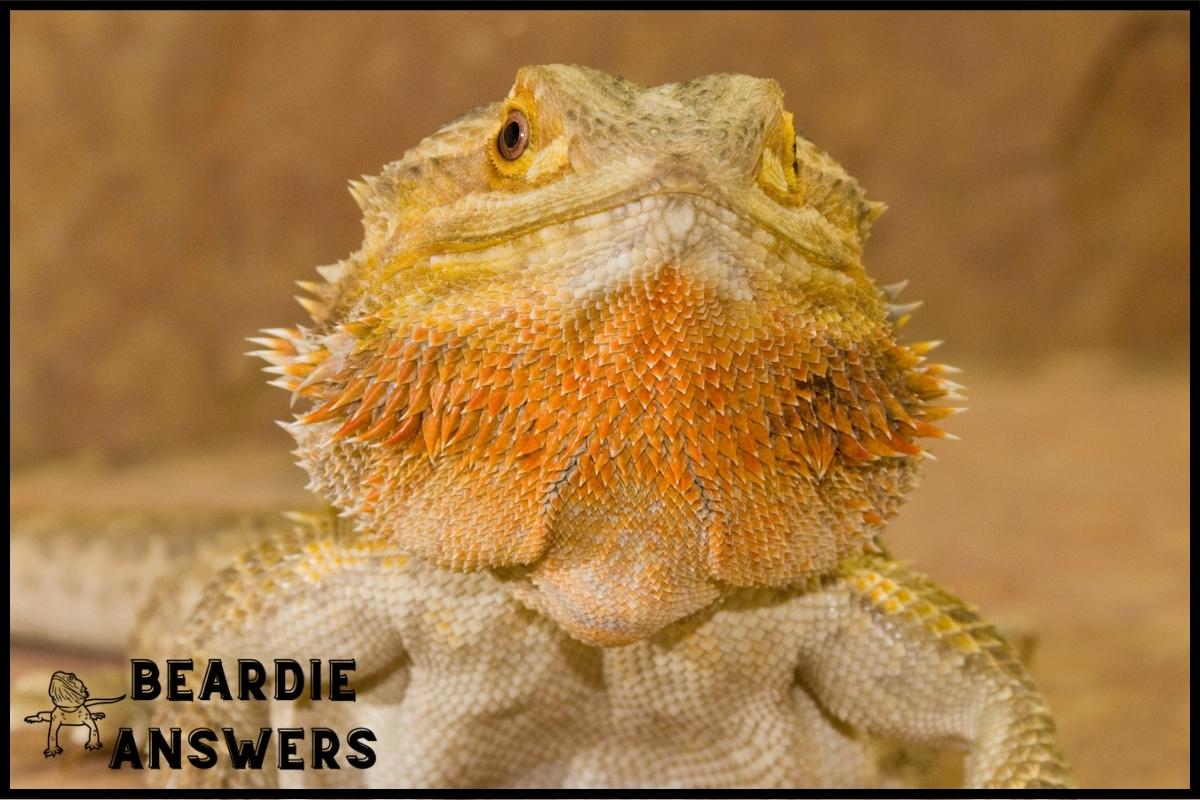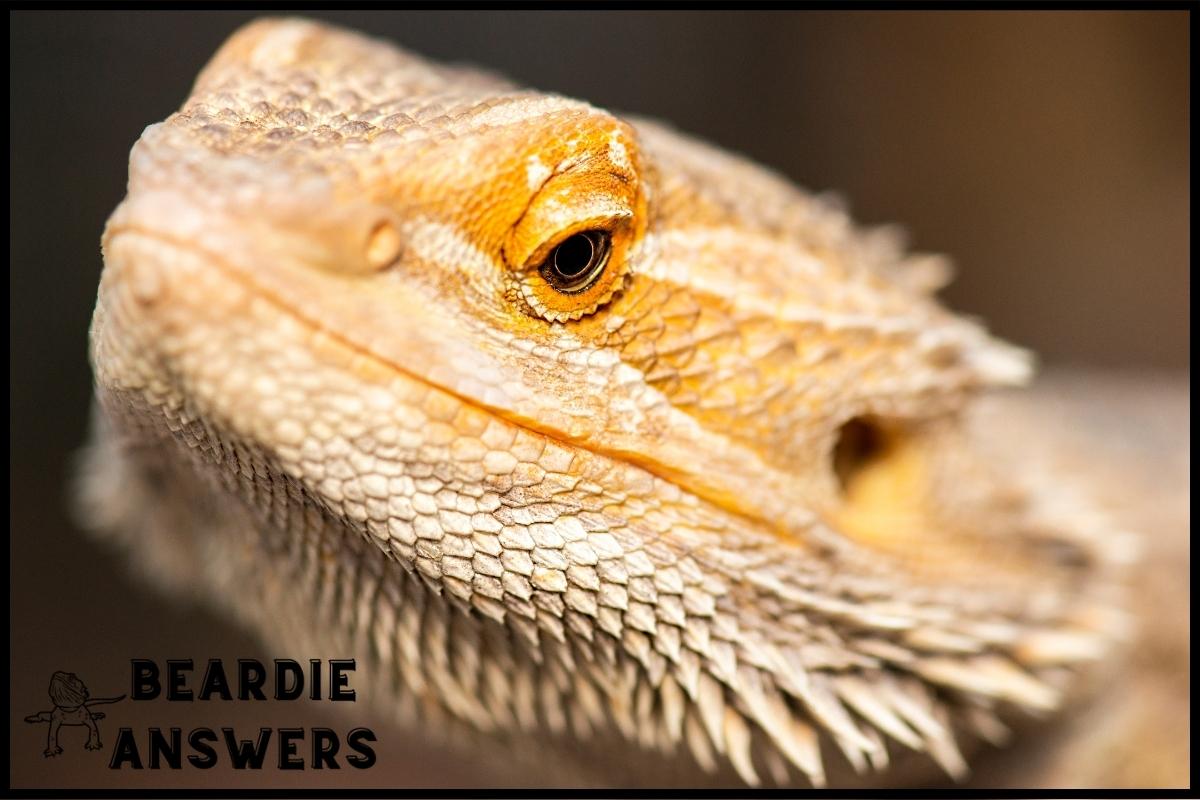The best thing to put at the bottom of a bearded dragons tank is a non-particle-based substrate that does not pose a risk of impaction if ingested. Options include reptile carpet, ceramic tiles, paper towels, and non-adhesive shelf liner.
Substrates such as sand, coconut fiber, and walnut shells are controversial. They can be used, but you risk impaction.
When selecting a substrate, choose one that’s easy to clean and maintain to ensure a healthy living environment for the bearded dragon.
What You'll Learn
What Type of Substrate Is Recommended for Bearded Dragon Tanks?
Before bringing your new scaly friend home, it is important to create an appropriate environment for them. One of the most important elements of their habitat is the substrate – the flooring material used to line the bottom of the tank.
There are several factors to consider when deciding what type of substrate is best for your bearded dragon. Here are a few of our favorites:
Calci-Sand
Calci-Sand is one of the most popular substrates for bearded dragons. It is composed of calcium carbonate and can help provide additional calcium for your beardie’s diet. However, it must be kept extremely clean to prevent impaction, so daily spot cleaning and weekly deep cleaning are necessary when using this substrate.
Reptile Carpet
Reptile carpet is another great option for bearded dragons. It is easy to clean and can be spot cleaned each day with a damp cloth or paper towel and vacuumed weekly to remove any debris or fecal matter that may have built up over time. As a bonus, it comes in a variety of colors and patterns so you can customize your dragon’s habitat to their personality!
Paper Towels
Paper towel makes an excellent substrate for a bearded dragon tank because it is easy to clean up and replace when necessary. It also helps absorb moisture, which prevents bacteria and fungus from growing in the tank.
What Type of Substrates Should Be Avoided?
While there are many different substrates that can be used in a tank, it is important to know which types should be avoided. Substrates that are too large or sharp can cause injury to the dragon or prevent them from digging and burrowing as they would in their natural habitat.
Here are a few substrates that should be avoided in a bearded dragon tank:
Sand
This is a very controversial one, but we typically do not recommended sand for a bearded dragon tank as it can cause impaction if ingested and the grain size is too large for the dragon to comfortably dig and burrow. However, there are a few exceptions. If you are an experienced bearded dragon owner, you may be able to get away with using sand.
Walnut Shells
Walnut shells are not suitable for a bearded dragon tank because they are sharp and can cause injury to the dragon’s feet if stepped on.
Cedar and Pine Shavings
Cedar and pine shavings contain oils that can be toxic to your pet. They can also irritate their skin and cause respiratory issues.
Gravel and Pebbles
Gravel and pebbles should also be avoided as a substrate for your Bearded Dragon’s tank. These materials can get stuck in their throats or digestive systems, leading to serious health problems.
What Are the Benefits to Choosing the Right Type of Substrate?
Each type of substrate provides different benefits and it is important to understand which one is best for your pet. Here are the main benefits to choosing the right type of substrate for a bearded dragon’s tank.
Absorbs Waste
One benefit of choosing the right type of substrate for a bearded dragon’s tank is that it absorbs waste from the animal’s urine and feces. This makes it easier to clean out their tank and proves more comfort for your pet.
Aesthetically Pleasing
Choosing the right substrate can make their terrarium look more aesthetically pleasing. Tile or slate substrates are great choices as they provide a natural look while still being easy to clean and maintain. Not only will this make your pet look good, but you will also be able to enjoy looking at their terrarium.
Temperature Regulation
The substrate in a bearded dragon tank plays an important role in providing a suitable temperature for the animal.
Certain types of substrates are better at retaining heat and providing insulation than others, which can help to keep temperatures within comfortable ranges for your pet.
Some substrates are more resistant to changes in temperature than others, allowing you to maintain a consistent habitat without drastic fluctuations in temperature.
Improved Humidity Levels
Different types of substrates can help keep moisture levels within suitable ranges, which is essential for the health and well-being of your pet. Some substrates are even designed to help increase humidity levels when needed, which can be helpful if your pet is suffering from dry skin or respiratory problems.
Increased Comfort Levels
Choosing the right type of substrate can provide increased comfort levels for your pet. Selecting an appropriate substrate can also provide a more natural habitat that your pet will enjoy spending time in.
Provides a Stimulating Environment
The right type of substrate can provide an interesting and stimulating environment for your bearded dragon. Different substrates provide a variety of textures, colors, and smells that keep your pet entertained and engaged.
Prevents Injuries
Some substrates such as sand or gravel may be too abrasive for delicate skin and can cause cuts or scrapes if your pet moves around too much. Selecting a softer substrate such as carpet or paper towels can help protect against these types of injuries.
How Deep Should the Substrate Layer Be in a Bearded Dragon Tank?
The substrate layer is an important part of the enclosure, and should be 6-8 inches (15-20 centimeters) deep. It is not necessary to go any deeper, as this will provide enough space for the dragon to burrow and explore its environment.
The substrate should be packed in tightly to ensure that it does not become displaced or move around when the dragon moves about. It is important to replace the substrate every 3-6 months to maintain good hygiene.
When you are ready to start assembling your terrarium, make sure to begin with the substrate layer. Once this layer is in place, other features such as a drainage layer can be added. With the right care and maintenance, you will have a safe and comfortable home for your bearded dragon.
[su_note note_color=”#eee”]
What You’ve Learned
- Non-particle-based substrate options include reptile carpet, ceramic tiles, paper towels, and non-adhesive shelf liner
- Sand, coconut fiber, and walnut shells are controversial substrates that can lead to impaction if ingested
- Substrates must be easy to clean and maintain for a healthy living environment for the bearded dragon
- Absorbing waste, temperature regulation, improved humidity levels, increased comfort levels, and preventing injuries are some benefits of using the right substrate
- The substrate layer should be 6-8 inches (15-20 cm) deep for burrowing and digging in the enclosure.
[/su_note]

Hi! My name is Bryan, I am the “one behind the words” here are BeardieAnswers.com. I believe that providing quality care and nutrition is the best way to ensure the health of your pet. Every beardie is special and deserves the best care and attention. If you have questions about your bearded dragon, please don’t hesitate to ask! View My Full Author Page




